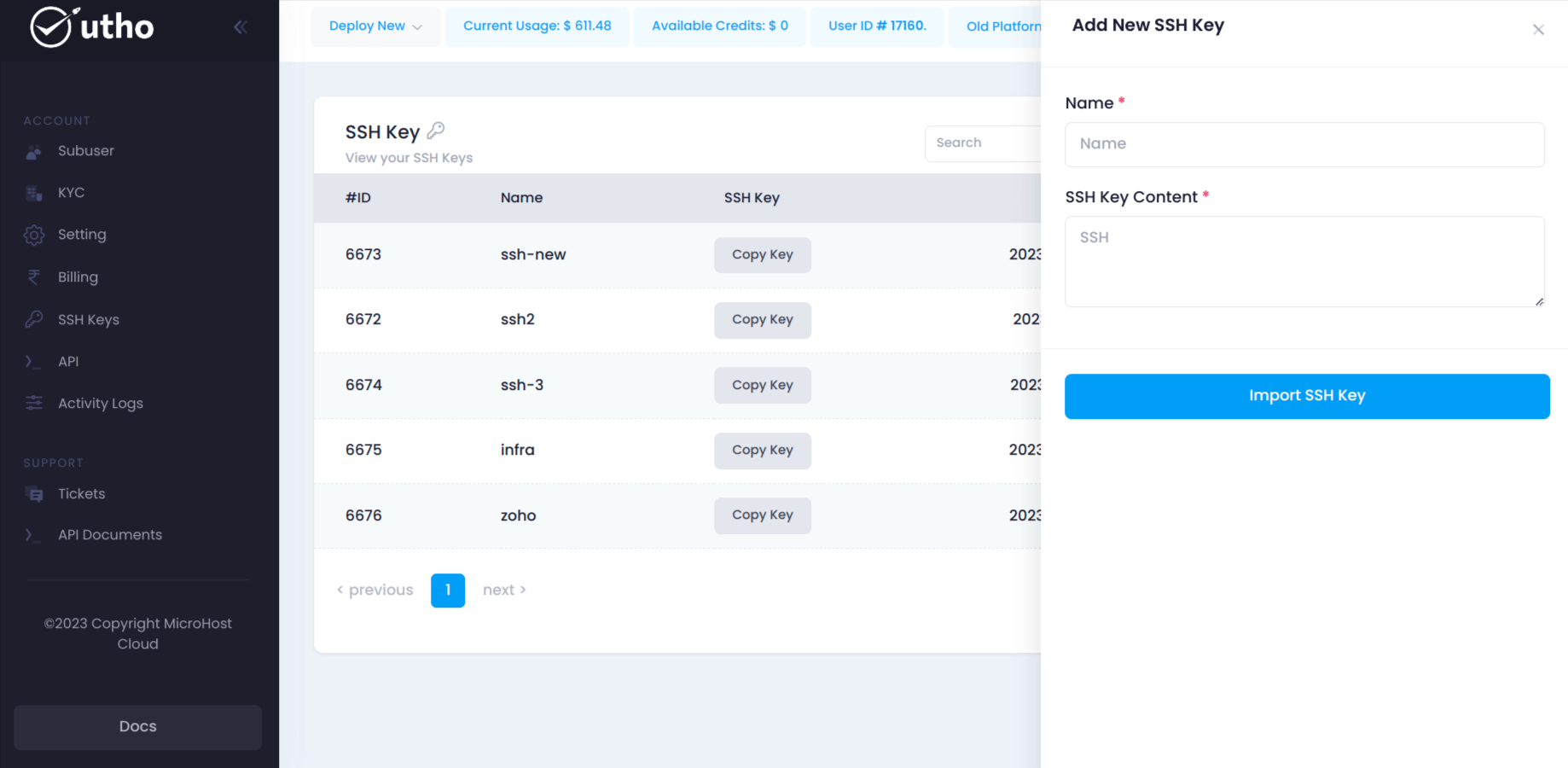🤖 AI-Generated Content
This content has been created using artificial intelligence. While we strive for accuracy, please verify important information independently.
When you think about all the little gadgets and machines that are now connected to the internet, you might wonder how we keep them safe. It’s a big deal, actually, making sure that only the right people and systems can talk to these devices. This is where something called SSH key management for remote IoT comes into the picture, and it’s a pretty important piece of the puzzle for keeping everything working smoothly and securely. It helps make sure your internet-connected things, whether they are sensors or smart home items, are not easily messed with by folks who shouldn't be poking around.
These tiny internet-connected tools, often called IoT devices, are everywhere these days, doing all sorts of useful things, from checking the temperature in a warehouse to helping with smart city lights. But, you know, because they are out there, sometimes in places far away, making sure they are protected from bad actors is a really big job. It's like having many doors that need their own special locks, and each lock needs a key that only certain people can have. That’s why we need good ways to look after these digital keys.
So, when we talk about looking after SSH keys for these distant internet-connected devices, we are talking about a way to give them a secret handshake. This handshake lets them prove who they are when they connect to other systems or when someone wants to access them. Without a good system for handling these keys, it could be a bit like leaving all your house keys under the doormat for anyone to pick up. We want to avoid that, obviously, especially when we are talking about a whole lot of devices that might be doing important work.
Table of Contents
- What Are SSH Keys, Anyway?
- Why Do Remote IoT Devices Need Special Key Care?
- The Challenges of Handling Many RemoteIoT SSH Keys
- How Can We Make RemoteIoT SSH Key Management Simpler?
- Setting Up a Smart Approach to RemoteIoT SSH Key Management
- Keeping Up with Key Changes in RemoteIoT Environments
- What Happens When Keys Are Not Managed Well?
- Picking the Right Tools for RemoteIoT SSH Key Management
What Are SSH Keys, Anyway?
Well, to put it simply, SSH keys are like very special digital passes. They come in pairs: one part is public, meaning you can share it around, and the other part is private, which you keep totally secret. When you want to connect to a machine, or when a machine wants to connect to another, they use these keys to prove they are who they say they are, without needing to type in a password every time. This makes things much faster and, honestly, a lot safer than just using words that someone could guess. It's a way to make sure that the connection between two points is truly secure, so, you know, no one else can listen in or pretend to be one of the parties.
Think of it like this: your public key is like a padlock you put on your front door, and your private key is the only key that can open that specific padlock. You can give copies of the padlock to anyone, but only you have the key to open it. When someone wants to get in, they try their private key on your padlock. If it fits, they are allowed in. This system is pretty clever because it means your secret private key never actually leaves your possession. It just proves you have it. This is a fundamental building block for safe connections, especially for things like remoteIoT SSH key management.
These key pairs are, in a way, much stronger than typical passwords. Passwords can be weak, or people might use the same one everywhere, or they might write them down. Keys, on the other hand, are long strings of random-looking characters, making them almost impossible to guess. They also help automate connections, which is super useful when you have many machines that need to talk to each other without a person needing to step in for every single interaction. This is why they are so loved in the world of computing, and why they are so important for anything that needs a secure link, like remoteIoT devices.
Why Do Remote IoT Devices Need Special Key Care?
Remote internet-connected devices, those little things out in the field or in your home, are often quite vulnerable. They might not have the same powerful security features as a big computer, and they are sometimes left alone for long periods. This means they are a pretty attractive target for bad actors. If someone gets access to one of these devices, they could potentially use it to get into other parts of your network, or even use it to cause trouble somewhere else on the internet. So, you know, keeping their access points really locked down is a big deal.
Imagine you have a hundred, or even a thousand, small sensors scattered across a large area, all sending back information. Each one of these sensors needs a way to connect securely. If you were to give each one a password, keeping track of all those passwords, changing them regularly, and making sure no one else knew them would be a nightmare. It would be, basically, an impossible task for a human to manage well. This is where a smart system for remoteIoT SSH key management really shines, because it can handle all those unique digital passes without breaking a sweat.
Also, these devices often don't have a screen or a keyboard. You can't just walk up to them and type in a password. You need a way to connect to them from a distance, and SSH provides that secure tunnel. Using keys for this connection means that the device can be set up once with its public key, and then anyone with the matching private key can get in, but only if they are supposed to. It's a bit like having a very specific remote control that only works for your TV, and no one else's. This makes remoteIoT SSH key management not just a good idea, but pretty much a must-have for any serious setup.
The Challenges of Handling Many RemoteIoT SSH Keys
So, looking after a few SSH keys for a couple of servers is one thing, but when you start talking about hundreds or thousands of internet-connected devices, the job gets a whole lot bigger. One of the main headaches is simply the sheer number of keys you have to keep track of. Each device might need its own unique key pair, and then you have to make sure the right people have access to the right private keys, and that those private keys are stored in a safe place. It’s, like, a really big spreadsheet that never quite stays still.
Another issue is what happens when a device is no longer in use, or if a key gets lost or stolen. You need a quick way to say, "Hey, that key isn't valid anymore!" This is called revocation, and it's a bit like cancelling a lost credit card. If you don't have a good system for this, a bad key could still be out there, giving someone access to your devices. For remoteIoT SSH key management, this is especially tricky because devices might be in hard-to-reach places, making physical access difficult or impossible.
Then there's the matter of rotating keys. Just like you should change your passwords every so often, it's a good idea to change your SSH keys too. This helps reduce the risk if a key somehow gets compromised without you knowing. But imagine trying to go to a thousand devices and manually update their keys. That would be, well, a full-time job for a very patient person. This is why automated systems are so important for effective remoteIoT SSH key management; they take away the human error and the endless manual work.
How Can We Make RemoteIoT SSH Key Management Simpler?
To make this whole key-handling business easier, people often turn to special tools and systems. These systems are built to do the heavy lifting: they can create keys, distribute them to the right devices, and keep a record of who has access to what. It's a bit like having a really organized librarian for all your digital passes. This way, you don't have to remember every single key or where it is; the system does that for you, which is pretty handy, you know.
One common approach is to use a central server that manages all the keys. When a device needs to connect, it talks to this central server, which then verifies its identity and gives it the temporary access it needs. This means the private keys don't have to live on every single device, which reduces the risk if one of those devices falls into the wrong hands. It's a more controlled way of doing things, and, honestly, it makes life a lot less stressful for the people in charge of security.
Another way to simplify things is to use automation. Instead of someone manually creating and installing keys, software can do it automatically. When a new device comes online, the system can give it a key. When a key needs to be changed, the system can do that too, without anyone needing to lift a finger. This saves a lot of time and makes the whole process much more reliable. So, in a way, it’s about letting computers do what they are good at, so humans can focus on bigger problems in remoteIoT SSH key management.
Setting Up a Smart Approach to RemoteIoT SSH Key Management
When you start to put a system in place for looking after your SSH keys for internet-connected devices, there are a few things to keep in mind. First, you want to make sure that every device gets its own unique key pair. Sharing keys between devices is a big no-no because if one device's key gets out, then all the devices using that same key are at risk. It's like giving everyone in a building the same key to every apartment; if one key is lost, everyone's home is vulnerable, which is not what you want for remoteIoT SSH key management.
Then, you need to think about how you're going to get those keys onto the devices in the first place. For devices that are already out there, this can be a bit of a puzzle. For new devices, you can often "provision" them with keys before they even leave the factory or before they are sent out. This makes the initial setup much smoother. It's about planning ahead, basically, so you're not trying to solve problems after the fact.
Also, it's a good idea to have a clear policy about who can access which keys. Not everyone needs access to every device. You can set up different levels of access, so that, say, a technician only has access to the devices they need to work on, and not every single device in the whole system. This is often called "least privilege," meaning people only get the permissions they absolutely require for their job. This is a very important part of making sure your remoteIoT SSH key management system is as safe as it can be.
Keeping Up with Key Changes in RemoteIoT Environments
Keys, like anything else, need to be looked after over time. This means having a plan for when keys need to be changed or taken out of service. If a device breaks down and is removed, its keys should be removed from the system too. If someone leaves the team, their access to private keys should be taken away right away. It’s about keeping the system clean and tidy, so there are no lingering ways for unauthorized people to get in. This continuous upkeep is, you know, pretty vital.
Automated key rotation is a really good practice here. This means the system automatically generates new keys for devices at regular intervals and updates them without human involvement. This is a huge benefit for remoteIoT SSH key management because it means you don't have to manually go through and change keys for hundreds or thousands of devices. It just happens in the background, making the whole setup much more secure over the long haul. It's like having a robot that constantly changes your locks for you.
And if, by chance, a key is ever thought to be compromised, you need a way to immediately "revoke" it. This makes the key useless, so even if someone has it, they can't use it to get into your devices. This immediate response capability is a really important safety net. Without it, a single compromised key could open up a lot of trouble. So, basically, having a clear process for these situations is just as important as setting up the keys in the first place for remoteIoT SSH key management.
What Happens When Keys Are Not Managed Well?
If you don't take good care of your SSH keys, especially for remote internet-connected devices, things can go wrong in a big way. The most obvious risk is that someone who shouldn't have access gets it. This could mean they steal data from your devices, or they could even take control of the devices themselves. Imagine someone turning off all the smart streetlights in a city, or messing with temperature sensors in a food storage facility. The impact could be, well, pretty serious.
Another problem is that poorly managed keys can make your systems less reliable. If keys expire unexpectedly, or if there are conflicts between keys, devices might suddenly stop being able to communicate. This can lead to downtime, which means your services aren't working, and that can cost money or even put people at risk, depending on what the devices are doing. It’s a bit like having a car where the keys sometimes just stop working; you can't rely on it to get you where you need to go.
And then there's the issue of compliance and reputation. Many industries have rules about how data and systems must be protected. If you don't have a good system for remoteIoT SSH key management, you might not be meeting those rules, which could lead to fines or other penalties. Plus, if news gets out that your devices were easily hacked because of poor key handling, it could really hurt your reputation with customers and partners. So, you know, it’s not just about technology; it’s about trust too.
Picking the Right Tools for RemoteIoT SSH Key Management
When it comes to choosing the right tools to help you with looking after your SSH keys for remote internet-connected devices, there are a few things to think about. You want something that can handle a lot of keys without getting bogged down. It should be able to create keys, send them to devices, and also take them away when they are no longer needed. A good system will make this all feel pretty easy, not like a constant struggle.
Look for tools that offer good automation features. The less manual work you have to do, the better. This includes things like automatically changing keys on a schedule, or automatically removing keys from devices that are no longer active. Automation helps prevent human errors and keeps your system safer around the clock. It’s about setting it up once and then letting it do its job, which is really what you want for remoteIoT SSH key management.
Finally, consider how well the tool fits with your existing setup. Does it work with the types of devices you have? Can it connect to your other security systems? A tool that plays nicely with what you already use will make the whole process much smoother and less of a headache to get started with. It’s about finding something that feels like a natural extension of your current operations, rather than a completely new thing you have to force into place. This makes the adoption process, well, a lot more straightforward.
This discussion explored the importance of remoteIoT SSH key management, covering what SSH keys are, why they are essential for internet-connected devices, and the challenges involved in looking after many of them. We also looked at ways to simplify key handling, discussed setting up smart approaches, and touched on the need for ongoing key changes. Finally, we considered the potential problems of poor key management and offered advice on selecting suitable tools to help keep your devices safe and secure.
Additional Resources
Visual Content



Disclaimer: This content was generated using AI technology. While every effort has been made to ensure accuracy, we recommend consulting multiple sources for critical decisions or research purposes.
